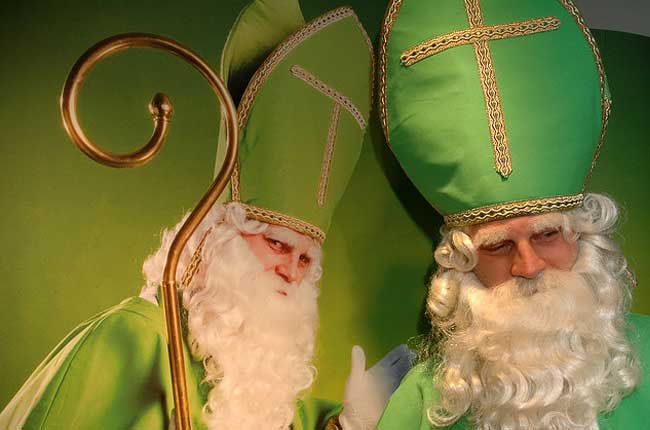Adherence to particular traditions, symbols, rituals, traits, and attitudes are fundamental in the forming and nourishing of cultural identities. Cultural identities have a profound influence on the manner in which the national identity of a given country is given quintessence and articulated to all concerned. Stuart Hall defines ‘cultural identity’ in terms of one shared culture, a sort of collective ‘one true self’, hiding inside the many other, more superficial or artificially imposed ‘selves’, which people with a shared history and ancestry hold in common’. It stands to reason that invented traditions are closely knitted into the fabrics of the cultural identity as well as the national identity.
In reference to the Dutch national identity, their history and indifference to their slavery past and choosing to forget and not to remember I choose a quote from Willem Frijhoff, a prominent Dutch social scientist. He has this to say regarding the Dutch society. “Dutch society thinks of its identity; namely much more as a culturally defined community than as a politically formed nation state. Yet the nation state is very prominent in the Netherlands, and the cultural nation of the Dutch community, maintain strong borders between insiders and outsiders, as it coexists with the nation state”. In terms of memory and forgetting the Dutch society sees slavery as something that happened years ago outside of the Netherlands. However, those to whom it happened to are now in their midst. The Dutch have chosen to forget. Some in the Afro-Dutch communities might also choose to forget but they cannot. Their everyday experience in the Netherlands with or without the images of Black Peter is to a certain extent determined by the memory of chattel slavery and the heritage it generated. That is also the case in terms of their children. Others of the African Diaspora who haven’t indirectly experienced chattel slavery in the West are not sheltered either from this devil’s dilemma. The memory is strongly connected to the systemic notions of Whiteness and Blackness and the attached privileges for some and uncertainties for others. Structural everyday racism does not discriminate between persons from Ghana and those from Surinam.
Taking our cue from the developments in the last three weeks or so wherein the Dutch Sinterklaas (Saint Nicholas) celebrations have been challenged with a demand to remove the Black Peters, it has become evident that the struggle to maintain the Black Peters as an essential feature in the celebrations is a remnant of the slavery past or at least White supremacy. In the social construct of White supremacy the realities of Whiteness and blackness are quite noticeable. That is at least for those who have eyes to see and are not blind by ideological contraptions. For instance if one was to really study race relations in the Netherlands one will discover Whiteness as the prevailing principle in the integration policy and the manner in which the black body is approached in institutions, in the media, on the street and in everyday social intercourse. One will also easily detect that there is a strong believe entangled in the so called Dutch traditional tolerance, which is supposed to have precluded racism. Isn’t this far from the everyday practice and living experience?
For a great deal of Dutch people a cultural identity is a given, a fixed belief, a way of life that is not subject to change. The notion that Saint Nicholas will be able to exist without his entourage of Black Peters seems to be non-negotiable. So why is Black Peter so indispensable to the Saint Nicholas celebrations? If as has been written by many in the daily newspapers, in the weekly magazines, on the internet spaces, etc the celebration has its roots in the middle ages or even in the 16th century and the Black Peters were added around 1850 why this obsession for the preservation of the Black Peters? Does this make it possible to say that the Black Peter phenomenon, which was added about 13 years before the Dutch in 1863 officially abolished their chattel slavery in the Caribbean region, is an invented tradition or at least a form of compensation to white Dutch? Is it a tradition bent on nourishing and maintaining the social construction of Whiteness and Blackness?

We honor freedom of speech. However, views and opinions expressed in articles and columns are not necessarily shared by COLORS/Liberty Publications.
By Artwell Cain
Cain is a Cultural anthropologist/blogger on race, representation and the issues of identity. He is founder of the Netherlands Institute for Cultural Heritage & Knowledge. ICHK advices and provides knowledge and information in the above mentioned fields. He analyses the factors that have been conducive to the upward mobility of ethnic minorities in The Netherlands and the manner in which youths articulate their sense of belonging . Cain's research has profound relevance for both policy makers, social scientists, students and others. More info.
Pictures: Flickr / Radio Nederland Wereldomroep / oxfamnovib
More Column articles /
Do you wish to write for Colors?






